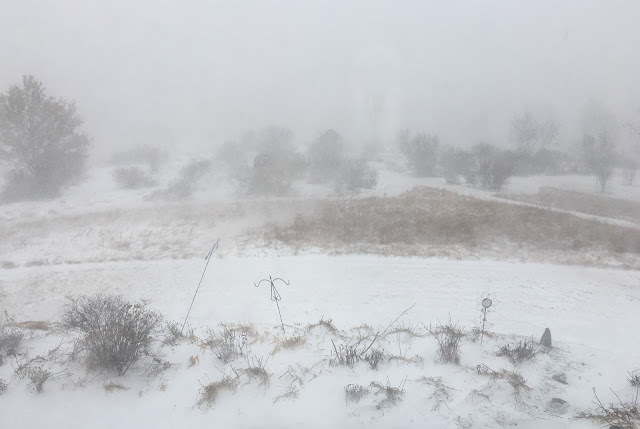It is my pleasure to introduce you to 'John Cabot', introduced by Ag Canada in 1977 according to helpmefind/roses, although other sources say its introduction was in 1978). Bred by Dr. Felicitas Svejda in 1969, this rose was named after an Italian navigator and explorer (his English name was John Cabot, but he was known as Giovanni Caboto in Italy), who, in 1497, crossed the formidable Atlantic Ocean to the New World and was the first European to reach Newfoundland since the Vikings.
The 'John Cabot' of my acquaintance is a gangly, thorny, sprawling mass of a rose, with some disheveled pink-red blossoms that open quickly to their 3-inch diameter forms in clusters on short stems. Many petals have a central white streak and, in that way, the rose reminds me of a smaller 'William Baffin'. Although described to have "mild fragrance" in the entry by helpmefind/roses, I detect no hint of fragrance in the flowers of my specimen. My 'John Cabot' only bloomed once last year, in June, although it is said to have sporadic rebloom in late summer.
A Hybrid Kordesii, 'John Cabot' ((Rosa kordesii Wulff x (Masquerade x Rosa laxa)) is said to be hardy to Zone 2B. He certainly is solidly cane-hardy in winter here in Zone 5, with absolutely no dieback in the past two seasons. and has suffered no blackspot or mildew on his light green, matte foliage. He is also growing in a site where I lost the rambler 'America' to Rose Rosette Disease, but shows no signs of that monstrous disease yet. At three years of age in my garden, the arching canes top out around 5 feet tall, and the rose has a tendency to grab whatever is passing by.In Hardy Roses, Robert Osborne stated that 'John Cabot' is "one of the most important new roses for northern gardens" and that he first saw it labeled as "seedling L07." Released as a climber, I will prune and grow it as a shrub and try my best to keep it looking less "wild."
If, as you read this blog entry, you feel that I'm not that fond of 'John Cabot', you are correct. While I don't despise the rose, it has few exceptional qualities for me to favor. It IS hardy, healthy, and needs little nurturing to provide a bounty of color in its season, however, so it has earned my attention in the garden, and, as you can see on the right photo taken just after sunrise last Friday, its jarring bright pink color makes it a standout even on a cloudy day..jpg)
.jpg)








.jpg)
.jpg)
.jpg)
.jpg)
.jpg)
.jpg)
.jpg)
.jpg)
.jpg)
.jpg)
.jpg)
.jpg)





.jpg)


.jpg)
.jpg)
.jpg)
.jpg)
.jpg)
.jpg)
.jpg)
.jpg)